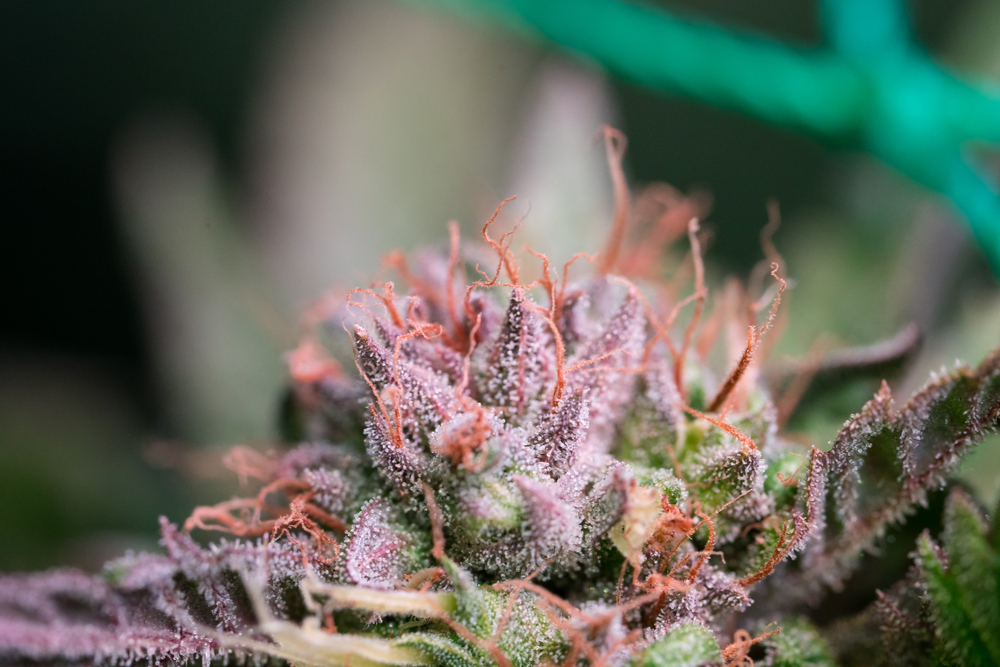For centuries, people have been using cannabis for both medicinal and recreational purposes. This plant is quite complex and contains a variety of compounds that may have varying effects. In this article, we will delve into the world of cannabis flowers, exploring their various components and how they are utilized.
 What exactly is a cannabis flower?
What exactly is a cannabis flower?
The cannabis flower represents the part of the plant housing a high concentration of cannabinoids, terpenes, and flavonoids. These substances play a role in both the fragrance and therapeutic properties of the plant.
Understanding the components within a cannabis flower
The core components of a cannabis flower include the following:
 1. Cannabinoids
1. Cannabinoids
Cannabis flowers possess an abundance of cannabinoids—chemical compounds exclusively found in the cannabis family. One known cannabinoid is Delta-9-tetrahydrocannabinol (THC), which is responsible for the psychoactive effects often associated with cannabis use. Another noteworthy cannabinoid found in these flowers is cannabidiol (CBD). Unlike THC, CBD does not produce psychoactive effects; instead, it is believed to offer therapeutic properties such as anxiety reduction and pain management.
2. Terpenes
Terpenes are compounds that give cannabis flowers their aroma and flavor profiles. Not only unique to cannabis, these compounds can be found in natural sources, like fruits, spices, and herbs. Different varieties of cannabis possess different combinations of terpenes that contribute to their aromas and flavors. Some terpenes may also interact with cannabinoids, potentially enhancing or modifying their effects.
3. Flavonoids
Flavonoids are a group of plant-based nutrients found in plants, including cannabis. They give flowers their colors while offering antioxidant and anti-inflammatory properties. Flavonoids play a role in supporting well-being and have been subject to research for their potential anticancer properties. Although further studies are needed on the flavonoids found in flowers, initial research has shown promising outcomes.
 Uses of Cannabis Flowers
Uses of Cannabis Flowers
Cannabis flowers have a wide range of applications, some of which include the following:
1. Medicinal applications
Cannabis flowers are utilized for various purposes to alleviate symptoms and conditions. For example, certain strains high in CBD are preferred for their inflammatory, pain-relieving, and anxiety-reducing properties without inducing the psychoactive effects associated with THC.
2. Recreational use
The consumption of cannabis flowers is often recreational due to the mind-altering effects caused by THC. Users enjoy the feelings of euphoria, relaxation, and sensory distortion commonly associated with cannabis usage. Different strains offer varying effects, allowing users to choose strains according to their desired experience. Some people have a preference for cannabis strains that induce relaxation and promote sleep, while others are looking for uplifting effects.
 Different Methods of Consumption
Different Methods of Consumption
The common methods of consuming cannabis or its products include the following:
1. Smoking
Smoking is widely known as the most common method of consuming cannabis flowers. Typically, the flowers are ground before being rolled into a joint or packed into a pipe or bong. When it’s lit, it generates heat that activates its compounds. The resulting smoke is then inhaled into the lungs, allowing for absorption into the bloodstream and faster onset of effects.
2. Vaporizing
Vaporizing has become increasingly popular as an alternative to smoking cannabis flowers. Vaporizers use lower temperatures compared to combustion methods to create vapor instead of smoke. By avoiding combustion, vaporizing minimizes exposure to toxins produced when smoking cannabis flowers. However, it still effectively delivers cannabinoids and terpenes.
3. Edibles
Edibles offer a great way to consume cannabis flowers without inhaling smoke or vaporized particles. Cannabis-infused oils or butter extracted from the plant are used to infuse food products, like candies, baked goods, chocolates, and beverages. Consuming edibles leads to an immediate onset of effects compared to smoking or vaporization because digestion takes time before cannabinoids enter the bloodstream. The impacts usually last longer but can also differ based on an individual’s metabolism.
Conclusion
The cannabis plant, with its blend of cannabinoids, terpenes, and flavonoids, provides not only recreational enjoyment but also potential medicinal advantages. Whether it is used for relaxation, pain management, or other therapeutic reasons, having knowledge about the constituents and consumption methods can assist in making decisions about cannabis usage. However, it is crucial to consult with a healthcare professional before using cannabis products for medicinal purposes.






